 W
WAle Khirtsizhiqo was a Circassian military commander from the Abdzakh region who took part in the Russo-Circassian War.
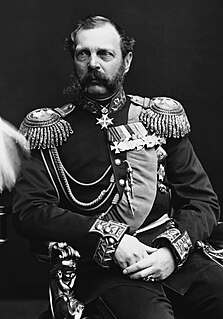 W
WAlexander II was the Emperor of Russia, King of Congress Poland and Grand Duke of Finland from 2 March 1855 until his assassination.
 W
WPrince Ivane Andronikashvili, also known as Knyaz Ivan Malkhazovich Andronnikov was a Georgian nobleman and general in the Imperial Russian service.
 W
WJafargulu Bakikhanov was an Azerbaijani noble and Russian general.
 W
WPrince Aleksandr Ivanovich Baryatinsky was a Russian General and Field Marshal, Prince, governor of the Caucasus.
 W
WCatherine II, most commonly known as Catherine the Great, was empress regnant of All Russia from 1762 until 1796 – the country's longest-ruling female leader. She came to power following a coup d'état that overthrew her husband and second cousin, Peter III. Under her reign, Russia grew larger, its culture was revitalised, and it was recognised as one of the great powers of Europe.
 W
WDmitry Petrovich Dokhturov was an Imperial Russian brigade, division and corps commander. He fought in the wars in the Caucasus and against the Ottoman Empire.
 W
WPavel Grigorievich Dukmasov was an Imperial Russian corps commander. He participated in the wars in the Caucasus and against the Ottoman Empire. He was promoted to Polkovnik (colonel) on October 28, 1866 and major general on September 8, 1874.
 W
WCount Georgi Arsenyevich Emmanuel was a Russian general of the Napoleonic Wars of Serbian origin.
 W
WIvan Stepanovich Ganetsky was an Imperial Russian division commander. He fought in wars in the Caucasus, Poland and against the Ottoman Empire.
 W
WYevgeny Aleksandrovich Golovin was a general in the Imperial Russian Army. In 1811 was appointed commander of Fanagoriyskaya Regiment and steadily rose through the ranks until he was promoted to General of Infantry in 1839. He was also Commander-in-Chief in the Caucasus from 1838 to 1842 and Governor-General of Baltic provinces from 1845 to 1848.
 W
WHaji Kizbech Tughujuqo was a Circassian military commander, princely leader of the Shapsug region who took part in the Russo-Circassian War. He witnessed all of his sons get killed by the Russians. Kizbech was a cavalry commander, famous for his successes in raiding behind enemy lines, the Englishman James Bell, who knew him personally, called him "The Lion of Circassia". He received multiple offers from the Russian Empire to switch sides and join its Imperial ranks but he refused all of them.
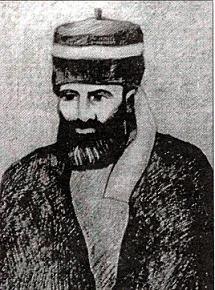 W
WKunta-haji Kishiev was a Chechen Muslim mystic, the founder of a Sufi branch named Zikrism, and an ideologue of nonviolence and passive resistance. He is often referred as the Chechen Mahatma Gandhi. A follower of the Qadiriyya Sufi order.
 W
WSheikh Muhammad (1771–1838) was a Lezgin sheikh, founder of Muridism among the Lezgins and in the Caucasus and teacher of all imams of Dagestan and Chechnya. The most famous student of the legendary Imam Shamil.
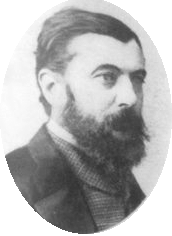 W
WTeofil Lapinski was a Polish military commander, writer, anti-Russian activist and volunteer in the Circassian army during the Russo-Circassian War.
 W
WSheikh Mansur was a Chechen military commander and Islamic religious leader who was influential in the resistance against Catherine the Great's imperialist expansion into the Caucasus during the late 18th century. Sheikh Mansur is considered the first leader of the resistance in Caucasus against Russian imperialism. He remains a hero of the Chechen and Caucasian peoples in general, and their struggle for independence.
 W
WBaron Feofil Egorovich (von) Meyendorf was an Imperial Russian military leader of Baltic German descent. He fought in the Caucasus and against the Ottoman Empire and the Empire of Japan.
 W
WGrand Duke Michael Nikolaevich of Russia was the fourth son and seventh child of Emperor Nicholas I of Russia and Charlotte of Prussia. He was the first owner of the New Michael Palace on the Palace Quay in Saint Petersburg.
 W
WCount Dmitry Alekseyevich Milyutin was Minister of War (1861–81) and the last Field Marshal of Imperial Russia (1898) and a war criminal. He was responsible for sweeping military reforms that changed the face of the Russian army in the 1860s and 1870s. He played a major role in the Circassian genocide.
 W
WMir-Fatah-Agha, commonly known as Mushthaid, was a high-ranking Twelver Shi'a Muslim cleric from Tabriz, whom the Russian government credited with keeping the Muslim population of the Caucasus loyal to the Russians, following their recent expansion and conquering of the Caucasus at the expense of Qajar Persia.
 W
WMuhammad Amin Effendi Asiyalo (Avar: МухIаммад Амин Асиялав; 1818 – 8 April 1901) was a Circassian military commander of Avar origin, one of the North Caucasian leaders in the Russo-Circassian War and the third naib of Imam Shamil.
 W
WHadji Murad was an important Avar leader during the resistance of the peoples of Dagestan and Chechnya in 1811–1864 against the incorporation of the region into the Russian Empire.
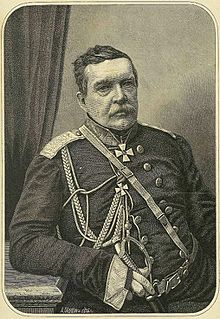 W
WNikolay Muravyov was an Imperial Russian military officer and General of the Russian Army. A member of the mighty Muravyov family, he distinguished himself during the battle of Warsaw (1831) of the November Uprising. He continued to serve in the military and took active part in the fights of the Crimean War. For his role in the Siege of Kars, captured on November 28, 1855, the tsar awarded him with a prestigious title "Karski", added to his surname.
 W
WNicholas I reigned as Emperor of Russia, King of Congress Poland and Grand Duke of Finland from 1825 until 1855. He was the third son of Paul I and younger brother of his predecessor, Alexander I. Nicholas inherited his brother's throne despite the failed Decembrist revolt against him. He is mainly remembered in history as a reactionary whose controversial reign was marked by geographical expansion, economic growth and massive industrialisation on the one hand, and centralisation of administrative policies and repression of dissent on the other. Nicholas had a happy marriage that produced a large family; all of their seven children survived childhood.
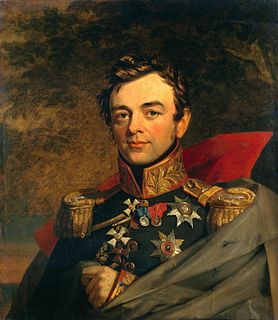 W
WCount Ivan Fyodorovich Paskevich-Yerevansky, Serene Prince of Warsaw was an Imperial Russian military leader. For his victories, he was made Count of Yerevan in 1828 and Namestnik of the Kingdom of Poland in 1831. He attained the rank of field marshal in the Russian army, and later in the Prussian and Austrian armies.
 W
WPrince Alexander of Georgia (1770–1844) was a Georgian royal prince of the Bagrationi family, who headed several insurrections against the Russian rule in Georgia. He was known as Eskandar Mīrzā (اسکندرمیرزا) in the Persian Empire, Tsarevich Aleksandr Irakliyevich in Russia, and as Alexander Mirza in Western Europe.
 W
WHaji Qerandiqo Berzeg was a Circassian military commander, national elder, princely leader of the Ubykh region, first chief of the Circassian Majlis and the first and last president of the Circassian Confederation. Most of his life, including his late childhood, was spent in the Russo-Circassian War (1763-1864) fronts. He met his own son in the battlefield, where he lost two of his other sons. After the Circassian genocide, he was exiled to the Ottoman Empire, served in the Ottoman army against Russia, established Circassian communities, and died there of old age.
 W
WBaron Georg Andreas von Rosen was a general of the Russian Imperial Army who served as (de-facto) Viceroy of the Caucasus from 1831 to 1837. He was one of the key figures of the Caucasian War.
 W
WImam Shamil was the political, military, and spiritual leader of Caucasian resistance to Imperial Russia in the 1800s, the third Imam of the Caucasian Imamate (1840–1859), and a Sunni Muslim Shaykh of the Naqshbandi Sufi Tariqa.
 W
WQerzech "Tughuj" Shirikhuqo was a Circassian military commander and the leader of the Natukhaj region who participated in the Russo-Circassian War.
 W
WTalhig of Shali was a 19th-century Chechen commander.
 W
WAlexander Yegorovich Timashev was Adjutant General (1859), Cavalry General (1872); in 1856–1861 – Chief of Staff of the Gendarme Corps and Manager of the Third Section of His Imperial Majesty's Own Chancellery; in 1867–1868 – Minister of Posts and Telegraphs; in 1868–1878 – Minister of Internal Affairs of the Russian Empire.
 W
WGeorgy Tumanov was member of the Georgian-Armenian royal house of Tumanishvili. He served as General of the Infantry as well as theorist and practitioner of military engineering in the Russian Empire. Tumanov was one of the most important specialists in that area at the time. He wrote numerous manuals for pioneer units on how to properly construct fortifications and other relevant military infrastructure.
 W
WMaxim Grigorievich Vlasov was a Russian commander and war criminal, general of the cavalry (1843), and chieftain of the Don Cossack army (1836). He commanded the Russian troops during the Russo-Circassian War and played a major role in the Circassian genocide.
 W
WPrince Mikhail Semyonovich Vorontsov was a Russian nobleman and field-marshal, renowned for his success in the Napoleonic wars and most famous for his participation in the Caucasian War from 1844 to 1853.
 W
WYusuf bek Kurinski was the last khan of Kura Khanate, as well as a general-major of Imperial Russian army.
 W
WSefer Bey Zanuqo (Zhanoqo) was a Circassian military commander, diplomat, nobleman and activist. He took part in the various stages of the Russo-Circassian War both in a military and a political capacity. Advocating for the cause of Circassian independence in the west and acting as an emissary of the Ottoman Empire in the region. By the end of his life Zanuqo had emerged as the leader of the Circassian independence movement.
 W
WGrigory Khristofovich Zass was a Russian Imperial general and war criminal of German descent who commanded Russian troops in the Russo-Circassian War, initially gaining fame for his heavily racist views and cruel methods against the Circassians, whom he saw as a "lowly race", justifying their slaughter and use in scientific experiments. Zass preferred cruel methods such as burning people alive, cutting off heads for entertainment, burning populated villages to the ground, deliberately causing epidemics, mass rape of children, and others. He kept a box under his bed with his collection of severed Circassian body parts, as well as a list of every Circassian he personally killed. He founded the city of Armavir.